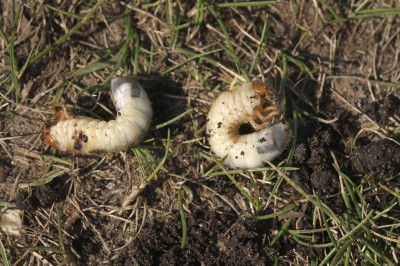






Are lawn insects bugging you? Are you ready to take action? This article covers common lawn insects and what to do about them.
Treating lawn pests is difficult if you aren’t sure what kind of pest you have. Caterpillars, such as armyworms, cutworms and lawn moth insects, are often found in lawns. You may also find white grubs or chinch bugs in the lawn. Here are some tips to help you identify and treat these pests.
A few caterpillars won’t do much damage, but in large enough numbers, they can cause serious problems. Test for the presence of caterpillars by performing a drench test. Mix 4 tablespoons of dishwashing liquid in two gallons of water and pour it over one square yard of the lawn. Watch the area carefully for 10 minutes, counting the number of caterpillars that rise to the surface. If you find more than 15 caterpillars in a square yard, treat the lawn with Bacillus thuringiensis (Bt) or spinosad.
White grubs feed on grass roots and cause brown patches of grass. Dog urine, uneven watering and improper use of pesticides and herbicides cause similar brown patches, so dig around the roots of the grass and count the number of grubs you find in one square foot.
An easy way to do this is to remove a square foot of sod with a flat shovel. If you find more than six grubs in a square foot, you should treat the lawn for grubs. Garden centers carry many different treatments for lawn grubs. Choose the least toxic treatment you can find, and carefully follow the instructions regarding timing and applications.
Chinch bugs vary in appearance, depending on the species and their life stage. Yellow patches that are two to three feet in diameter may indicate the presence of chinch bugs. Lawns under attack by chinch bugs are easily stressed by drought, and the whole lawn may discolor if not watered regularly.
Discourage these insects in grass by watering regularly and removing thatch in fall. Without the cover of thatch, chinch bugs can’t overwinter in the lawn or lay their eggs. If these measures don’t control the insect, treat the lawn with insecticides containing trichlorfon bifenthrin or carbaryl. These insecticides are not organic and will kill beneficial insects, so use them only as a last resort.
No system of preventing lawn insect pests is foolproof, but a healthy, well-maintained lawn isn’t as likely to attract insects as a neglected lawn. Follow these guidelines to help your lawn thrive:
Copyright © www.100flowers.win Botanic Garden All Rights Reserved